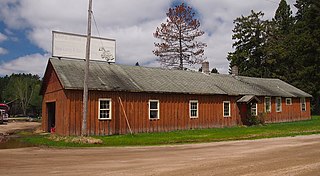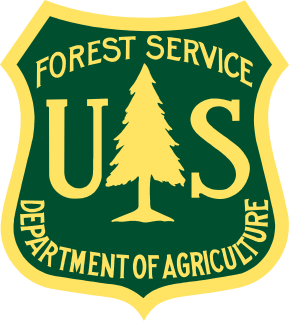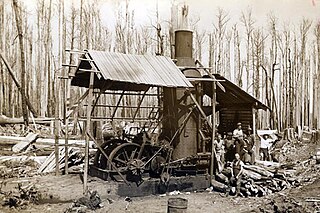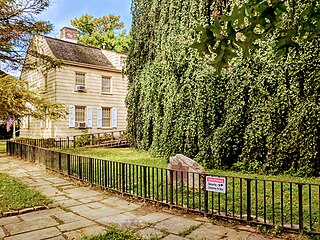 W
WThis is a list of historic schools of forestry, by founding date. Also included is information about each school's location, founder(s), present status, and closing date. Many remain active.
 W
WAx Men is an American reality television series that premiered on March 9, 2008 on History. The program follows the work of several logging crews in the second-growth forests of Northwestern Oregon, Washington and Montana and the rivers of Louisiana and Florida. The show highlights the dangers encountered by the loggers. Following in the footsteps of other shows from Original Productions, like Deadliest Catch and Ice Road Truckers, the series is considered part of a recent "real-men-in-real-danger" television programming trend.
 W
WThe Canada–U.S. softwood lumber dispute is one of the largest and most enduring trade disputes between both nations. This conflict arose in 1982 and its effects are still seen today. British Columbia, the major Canadian exporter of softwood lumber to the United States, was most affected, reporting losses of 9,494 direct and indirect jobs between 2004 and 2009.
 W
WThe pathogenic fungus Cryphonectria parasitica is a member of the Ascomycota. It is native to East Asia and South East Asia and was introduced into Europe and North America in the early 1900s. The fungus spread rapidly and caused significant tree loss in both regions.
 W
WWhile the first Christmas tree farm may have appeared as early as 1901, Christmas tree production in the United States was largely limited to what could be harvested from natural forests until the 1950s. Among the important Christmas tree producing areas in the U.S. are Wisconsin, North Carolina, Pennsylvania and the Pacific Northwest. In 2002 Christmas tree production in the United States totaled 20.8 million trees and the U.S. was one of the world's leading producers of natural Christmas trees. That same year, Pennsylvania was the top producer in the United States.
 W
WCivilian Conservation Corps Camp S-52 is a former forestry camp of the Civilian Conservation Corps (CCC) in the unincorporated community of Cusson, Minnesota, United States. Four workshops built around 1933 survive from the time of the camp, which was one of the 25 original CCC camps established in Minnesota in the first year of the program. The buildings were listed on the National Register of Historic Places in 1989 for their local significance in the theme of politics/government. They were nominated for being the area's only known surviving CCC buildings. Civilian Conservation Corps camps were typically populated with simple utilitarian structures only intended for temporary use, and thus few survive to the present day.
 W
WCharles Clemon Deam was the first state forester of Indiana. His interest in botany began at a young age and grew to include categorization and sustainable practices. He discovered 25 new species, 48 plants are named after him and his herbarium includes 78,000 specimen, still preserved at IU Bloomington.
 W
WDeforestation in the United States was an ongoing process until recently. Between 2010 and 2020, the US forests increased 0.03% annually, according to FAO.
 W
WThe emerald ash borer, also known by the acronym EAB, is a green buprestid or jewel beetle native to north-eastern Asia that feeds on ash species. Females lay eggs in bark crevices on ash trees, and larvae feed underneath the bark of ash trees to emerge as adults in one to two years. In its native range, it is typically found at low densities and does not cause significant damage to trees native to the area. Outside its native range, it is an invasive species and is highly destructive to ash trees native to Europe and North America. Before it was found in North America, very little was known about emerald ash borer in its native range; this has resulted in much of the research on its biology being focused in North America. Local governments in North America are attempting to control it by monitoring its spread, diversifying tree species, insecticides, and biological control.
 W
WSpecies which are not native to a forest ecosystem can act as an agent of disturbance, changing forest dynamics as they invade and spread. Invasive insects and pathogens (diseases) are introduced to the United States through international trade, and spread through means of natural and human-dispersal. Invasive insects and pathogens are a serious threat to many forests in the United States and have decimated populations of several tree species, including American chestnut, American elm, eastern hemlock, whitebark pine, and the native ash species. The loss of these tree species is typically rapid with both short and long-term impacts to the forest ecosystem.
 W
WThe Forest Fire Lookout Association (FFLA) is a group dedicated to the worldwide research and restoration of forestry fire lookouts. It is one of the administrators of the National Historic Lookout Register.
 W
WThe Forest Products Laboratory (FPL) is the national research laboratory of the United States Forest Service, which is part of USDA. Since its opening in 1910, the FPL has provided scientific research on wood, wood products and their commercial uses in partnership with academia, industry, tribal, state, local and other government agencies. The laboratory is headquartered in Madison, Wisconsin. The focus of the Forest Products Laboratory is to promote healthy forests and forest-based economies through the efficient, sustainable use of the Nation's wood resources.
 W
WThe International Institute of Tropical Forestry is a program of the United States Forest Service that was founded in 1939. It is headquartered in Rio Piedras, Puerto Rico, on the grounds of the University of Puerto Rico's Agricultural Experimental Station. May 20, 2014 marked the Institute's 75th anniversary.
 W
WThe Journal of Forestry is the primary scholarly journal of the Society of American Foresters. It aims to advance the forestry profession by keeping professional foresters informed about developments and ideas related to the practice of forestry. The journal publishes editorial and technical content related to management of forests and related natural resources. Articles are generally written for an audience of natural resources professionals, with topics spanning the many facets or disciplines of forestry. The Journal is currently edited by Keith A. Blatner. According to the Journal Citation Reports, its 2018 impact factor is 2.675.
 W
WLogging in the Sierra Nevada arose from the desire for economic growth throughout California. The California Gold Rush created a high demand for timber in housing construction, mining procedures, and building railroads. In the early days, harvesting of forests were unregulated and within the first 20 years after the gold rush, a third of the timber in the Sierra Nevada was logged. Concern for the forests rose and created a movement towards conservation at the turn of the 19th century, leading to the creation of state and national parks and forest reserves, bringing forest land under regulation. Between 1900 and 1940, agencies like the U.S. Forest Service and National Park Service regulated the use of the Sierra Nevada’s resources. The economy boom after World War II dramatically increased timber production in the Sierras using clear-cutting as the dominant form of logging. In addition, the California Forest Practice Act, or the Z'Berg-Nejedly Forest Practice Act was enacted in 1973 to regulate private timberland holdings.
 W
WMaple syrup is a syrup usually made from the xylem sap of sugar maple, red maple, or black maple trees, although it can also be made from other maple species. In cold climates, these trees store starch in their trunks and roots before winter; the starch is then converted to sugar that rises in the sap in late winter and early spring. Maple trees are tapped by drilling holes into their trunks and collecting the sap, which is processed by heating to evaporate much of the water, leaving the concentrated syrup. Most trees can produce 20 to 60 litres of sap per season.
 W
WRobert O. Mendelsohn is an American environmental economist. He is currently the Edwin Weyerhaeuser Davis Professor of the School of Forestry and Environmental Studies at Yale University, Professor of Economics in Economics Department at Yale University and Professor in the School of Management at Yale University. Mendelsohn is a major figure in the economics of global warming, being for example a contributor to the first Copenhagen Consensus report. Mendelsohn received a BA in economics from Harvard University in 1973 and obtained his Ph.D. in economics from Yale University in 1978.
 W
WThe Multiple Use - Sustained Yield Act of 1960 is a federal law passed by the United States Congress on June 12, 1960. This law authorizes and directs the Secretary of Agriculture to develop and administer the renewable resources of timber, range, water, recreation and wildlife on the national forests for multiple use and sustained yield of the products and services.
 W
WThe National Forest Management Act (NFMA) of 1976 is a United States federal law that is the primary statute governing the administration of national forests and was an amendment to the Forest and Rangeland Renewable Resources Planning Act of 1974, which called for the management of renewable resources on national forest lands. The law was a response to lawsuits involving various practices in the national forest, including timber harvesting., Zieske v Butz was the lawsuit brought by members of the Pt Baker Association on Prince of Wales Island against the US Forest Service's first environmental impact statement. The suit halted logging on the NW tip of the island which consisted of 400,000 acres and resulted in a call by the timber industry for Congressional action to undo the lawsuit. Representative Foley noted on the floor that six other suits were blocking logging with holdings similar to Zieske v Butz.
 W
WThe National Hardwood Lumber Association (NHLA) was founded on April 8th, 1898 in Chicago, Illinois to establish uniformity of inspecting hardwood lumber. The NHLA is now a membership-based trade association that serves two main purposes: to stimulate economic activity and to provide a vehicle for the members to collectively strive for mutual benefit. The NHLA has continued to be a national voice for the hardwood industry.
 W
WNew York State Forests are administered by the Division of Lands and Forests of the New York State Department of Environmental Conservation (NYSDEC). New York State Forests include reforestation, multiple use, and unique areas; and state nature and historic preserves, with approximately 600,000 acres (2,400 km2) classified as reforestation areas and approximately 9,000 acres (36 km2) classified as multiple use lands. Land within the Adirondack Park or the Catskill Park is not included as part of the State Forest system.
 W
WThe Penobscot Experimental Forest (PEF) is an Experimental Forest managed by the US Forest Service (USFS) in the towns of Bradley and Eddington, in the state of Maine, USA. The mission of the PEF is to afford a setting for long-term research conducted cooperatively by USDA Forest Service scientists, university researchers, and professional forest managers in Maine; to enhance forestry education of students and the public; and to demonstrate how the timber needs of society are met from a working forest.
 W
WPseudotsuga is a genus of evergreen coniferous trees in the family Pinaceae.
 W
WThe State University of New York College of Environmental Science and Forestry (ESF) is a specialized, doctoral-degree granting institution in Syracuse, New York. It is part of the State University of New York (SUNY) system. ESF is immediately adjacent to Syracuse University, within which it was founded, and with which it maintains a special relationship. It is classified among "R2: Doctoral Universities – High research activity".
 W
WThe SUNY-ESF Ranger School, on the east branch of the Oswegatchie River near Wanakena, New York, offers A.A.S. degrees in forest and natural resources management. Established in 1912, the school is affiliated with the State University of New York College of Environmental Science and Forestry (SUNY-ESF). The Ranger School commemorated its centennial in 2012-13.
 W
WThe Timber Culture Act was a follow-up act to the Homestead Act. The Timber Culture Act was passed by Congress in 1873. The act allowed homesteaders to get another 160 acres (65 ha) of land if they planted trees on one-fourth of the land, because the land was "almost one entire plain of grass, which is and ever must be useless to cultivating man."
 W
WThis is an incomplete list of major wildfires in Washington state history.
 W
WThe Washington Winch sits in the forests of eastern Victoria near Swifts Creek and is also known as the Washington Iron Works Skidder.
 W
WThe Weeping Beech was a historic tree located at Weeping Beech Park in Flushing, Queens, New York City. It was the mother of all European weeping beeches in the United States.
 W
WYale School of the Environment (YSE) is a professional school of Yale University. It was founded to train foresters, and now trains environmental leaders through four 2-year degree programs and two 10-month mid-career programs. YSE strives to create new knowledge that will sustain and restore the health of the biosphere and emphasizes the possibility of creating a regenerative coexistence between humans and non-human life and the rest of the natural world. Still offering forestry instruction, the school has the oldest graduate forestry program in the United States.